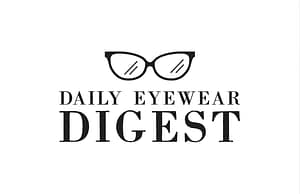Face shape filters have taken over how we choose glasses in 2025. With AI-driven recommendations from apps and virtual try-on tools, finding the “right” frames seems easier than ever. But while these filters can be fun and helpful, they often overlook critical aspects of real-world glasses fit. Before you trust your screen’s suggestion, here’s what you really need to know.
1. Real Faces Aren’t One-Shape-Fits-All
Most filters label your face as a single type—round, oval, square, or heart. But in reality, faces are much more nuanced. You might have a round chin with angular cheekbones or a broad forehead with a narrow jawline.
According to optical experts, almost no one has a perfectly symmetrical or singular face shape. This oversimplification can lead filters to recommend frames that miss the mark on how they truly balance with your features.
2. Physical Fit Outweighs Shape Suggestions
A frame that looks good virtually may not fit well in real life. Here’s why physical measurements matter more:
- Bridge Width: A poorly fitting bridge can cause glasses to slide or pinch your nose.
- Temple Length: Arms that are too short or too long won’t sit comfortably behind your ears.
- Cheek Clearance: Frames should not touch your cheeks, especially when you smile.
Eyewear fitters often stress these metrics as essential for comfort and aesthetics—something no face filter can measure.
3. Broad Style Advice Ignores Facial Balance
Filters often suggest general styles based on face shape, such as “round faces need angular frames.” While somewhat accurate, this advice lacks nuance. Optical professionals recommend choosing frames that create visual harmony:
- Round faces benefit from rectangular or cat-eye frames to sharpen features.
- Square faces look softer with curved oval styles.
These recommendations focus on contrast and balance, not rigid rules. Unfortunately, most filters don’t explain why a style works—they just assign it.
4. Comfort, Vision & Lifestyle Matter More
Your daily needs affect the glasses you should wear, far beyond face shape:
- Weight and pressure: Heavy frames can cause fatigue or marks.
- Prescription needs: Higher prescriptions need frames that support thicker lenses.
- Lens type: Bifocals or progressives require certain frame depths.
- Daily activities: Someone on Zoom all day might want blue-light filters; a cyclist might need sport specs.
Face shape filters don’t ask about these variables. Only you—and sometimes a good optician—can factor them in.
5. Filters Can Be Misleading Visually
Virtual try-ons depend on lighting, camera angle, and screen quality. The frames you “try” in your living room lighting may look entirely different under natural light. Some filters also fail to adjust frame size to scale, creating an illusion of fit when the actual product might be too small or oversized.
Additionally, skin tone, hair color, and makeup aren’t always rendered accurately, skewing your impression of how the frames complement your look.
What Face Shape Filters Actually Do Well
Despite their shortcomings, face-shape filters are a solid starting point:
- They narrow down styles you might want to explore.
- They help you visualize variety without trying on 20 pairs in-store.
- They encourage experimentation, which is especially helpful for first-time buyers.
They’re a smart launchpad—not a final decision tool.
How to Choose Glasses That Truly Fit
Here’s what to do after the filter gives you a suggestion:
| Step | What to Check |
|---|---|
| 1. Size Specs | Lens width, bridge width, and temple length—ensure they match your face |
| 2. Frame Position | Should sit just below the eyebrows, not touching cheeks |
| 3. Weight & Pressure | Try for 10–15 mins to see if pressure points develop |
| 4. Prescription Compatibility | Ensure your lenses will fit properly without distortion |
| 5. Real Try-On | Use AR try-on with measurements or visit an optician in person |
Conclusion: Trust the Mirror, Not Just the Filter
Face shape filters in 2025 are smarter than ever—but they still can’t replace real-life fitting and personalization. They’re a fun, helpful guide, but they don’t account for comfort, lifestyle, lens needs, or the reality of your unique features.
So use that filter, but follow it up with real measurements, practical testing, and professional input. Because when it comes to eyewear, true fit is more than face shape—it’s feel, function, and personal style.

